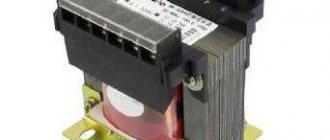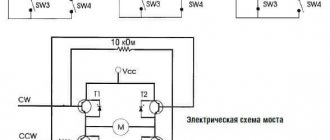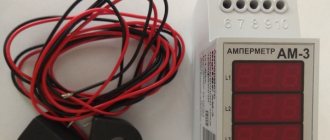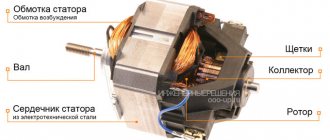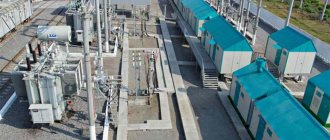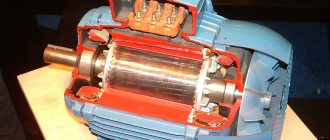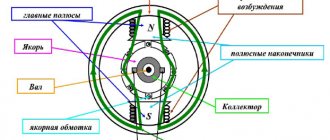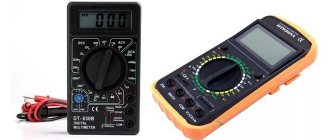Where is the 220 to 24 volt transformer used? In fact, devices of this type are necessary for various electrical appliances that can operate on a 24 V network. To do this, direct current from a 220 V outlet must be converted. Transformers are selected for this purpose.
24 V equipment includes compressors, distributors and also electric motors. Also, many drives operate from a network with a voltage of 220 V. In this case, it is important to note that transformers are produced in different capacities. Today, even 20 W models are available on the market. However, there are very powerful modifications that are actively used in production.
The device of a simple transformer
The main element of the transformer is the relay. The coils themselves are installed with different windings. Magnetic cores are available with cores. In terms of current conductivity, they differ quite significantly. It is also important to mention that some modifications include special extenders. In this case, much depends on the operating frequency parameter.
Insulators in transformers are designed to protect the core from overloads. To rectify direct current, transceivers are installed in devices. They are produced in orthogonal and tuning types.
Increasing power supply capacity
There are often technical conditions when increased capacity is required from the power source while maintaining the operating voltage. In such cases, a parallel connection of batteries is used to complete the battery. This method of switching allows you to increase the total capacity of the power supply device several times, and in especially critical cases, tens of times.
Parallel connection of batteries with formulas
Parallel connection is carried out by switching single-pole terminals of current sources: the positive and negative terminals of the previous battery are connected to the same terminals of the next one. The total electrical capacitance of a battery switched in this way will be equal to the sum of the electrical capacitances of the individual sources included in the circuit. This means that when three batteries with a nominal capacity of 60 A*h are connected, the result is a device with an electrical capacity of 180 A*h.
As an example of connecting batteries using parallel switching, we can cite sources of uninterruptible or emergency power supply for devices and equipment. The batteries of heavy-duty vehicles and heavy special equipment with a large engine capacity are connected in parallel. Parallel switching has become widespread in the navy: here parallel-connected power devices are used to start auxiliary diesel engines, operate lighting, communication systems and life support in emergency situations.
Downgrade modifications
A step-down transformer from 220 to 24 volts is often found with a power of 100 watts or more. Devices of this type are used, as a rule, for electric drives. Many models have magnetic cores with relays with strip cores. It is also important to note that the windings in 3 kW devices are installed concentrically. However, modifications with three-layer analogues are available on the market. There are two total outputs for step-down devices.
Some modifications are available with terminals. A step-down transformer 220 to 24 volts weighs no more than 5 kg. The models differ quite significantly in terms of current conductivity. In this case, the type of transceiver must be taken into account. Domestic transformers are mainly sold with orthogonal analogues. However, foreign companies prefer trimmed transceivers. The current overload indicator for models is on average 5.5 A. Some devices are available with switches for phase adjustment.
Increasing battery operating voltage
Electric energy batteries have different operating voltages. It can vary in a very wide range: from 0.5 to 48 Volts. At the same time, to ensure autonomous power supply of devices, starting internal combustion engines, and powering electric drive equipment, a different voltage range is required. You can increase the operating voltage of an autonomous current source by connecting several batteries in series into a battery.
Schemes and formulas for series connection of batteries
In a series connection, the opposite polarity terminals of the battery are switched. The positive terminal of the previous device is connected to the negative terminal of the next one. The total operating voltage of the battery with this method will be equal to the sum of the operating voltages of the switched current sources. This means that to obtain a battery with an operating voltage of 12 V, it is necessary to connect 4 three-volt sources or 10 batteries with an operating voltage of 1.2 V in series. The capacity of the series-connected sources does not change and remains equal to the capacity of each battery included in the circuit.
An obvious and clear example of this method of assembling a battery is car batteries. In them, individual sources, called banks, are combined in a common housing and connected in series with lead busbars. The choice of lead as a material for the connecting bars is explained simply: battery electrodes are also made of lead. The buses, integrated into the communication circuit, are connected to the electrodes at the molecular level rather than mechanically. This will avoid the occurrence of electrochemical corrosion processes.
Toroidal models
The toroidal transformer 220 to 24 volts differs in that it contains a comparator. Due to the specified element, the clock frequency from the network is changed. It is also important to mention that many devices are equipped with zener diodes. The magnetic cores in the devices are installed as usual.
The windings for transformers themselves are of the concentric type. These devices are most often used for low-power engines. They are also suitable for many types of compressors. As a rule, there are no regulators in devices. Insulators are used of the composite type. On average, the current conductivity parameter of the models does not exceed 50 µS. In turn, devices with a power of 80 W can withstand an overload of 3 A.
General characteristics of inverters 24-220
The inverter models produced have a variety of parameters and technical characteristics. This makes it possible to choose the most optimal option for specific operating conditions. However, the general functionality of the devices is almost the same, so as an example we can take a 24V - 220V voltage converter with a power of 200 watts.
This device is designed to receive alternating voltage from the current of a 24V battery. The output produces a stable voltage of 220V, with a frequency of 50 Hz, suitable for operating standard household appliances. All inverters of this type are equipped with their own built-in protection against short circuits, overheating and overloads.
The 24V-220V inverter in question is best suited for use with a car battery. It allows you to most effectively solve priority everyday problems during travel and outings. In addition to the standard socket, the case has a USB connector to which mobile devices can be connected.
The converter operates not only from the battery, but also from the cigarette lighter. It also interacts well with a mobile power station using solar panels.
Oil models
The 220 12–24 volt oil transformer is equipped with a special heat exchanger. Channels are used directly for coolant. The cores in many modifications are of the tape type. Three-layer windings are most often used. Relays deserve special attention. They are installed with different conductivity. On average, for oil configurations this parameter fluctuates around 60 µS.
Coils in devices are installed with magnetic cores. There are two direct terminals for connecting equipment. Some configurations are produced with terminals. Oil-based devices are ideal for electric drives. Transceivers in all models are installed only of the orthogonal type.
How to make a device with your own hands?
Making a 220 to 24 volt transformer with your own hands is quite difficult. First of all, for a step-down modification you will need a large coil with good current conductivity. In order to ensure stable operating frequency, the winding must be of concentric type. Directly to connect equipment, terminals are used, which are simply conductors.
In this case, conventional expanders are installed. They can be used from any broken transformer. If we consider modifications with switches, then we will have to make a separate stand for them. To prevent failures from occurring frequently, insulators are used. Nowadays, composite analogues are considered to be the most reliable.
80 W model
A 220 to 24 volt DC 80 watt transformer is most suitable for conventional compressors. Models of this type are quite rare in production. Their energy consumption is insignificant, but the power for a normal electric drive is definitely not enough. Magnetic cores in devices are usually used with a low-voltage winding.
In this case, the cores are of the stamped type. If we consider configurations with high current conductivity, then they have special comparators. However, most often conventional bends are installed. There are also models with stabilizers. In this case, the overload current parameter averages 3.5 A. Switches on 80 W models are never used.
100 W device
A 220 to 24 volt (100W) transformer can be used for electric drives. Many modifications are equipped with reliable protection systems. Most often, manufacturers indicate the IP20 marking. All this suggests that the model’s grounding system is used with composite insulators. If we talk about magnetic cores, they are used with a secondary winding.
Quite often, cores are of the sheet type. However, there are many stamped analogues on the market. In terms of quality, they are not much inferior to sheet cores. Current conductivity for 100 W configurations averages 70 µS. If we talk about overloads, then a lot in this situation depends on the manufacturer. Devices with transceivers are rare. However, 100 W transformers with stabilizers are in great demand.
Transformer 120 W
Transformer 220 to 24 volts 120 W is suitable for electric motors of different power. The cores are installed in sheet type in many configurations. Magnetic cores, in turn, are available with a high-voltage winding. The devices have two pins as standard. Some models are produced with terminals for connection to equipment. There are different cooling systems today. However, most often we are talking about a normal decrease in temperature due to air circulation.
Coils in transformers are often mounted on support rings. In some cases, models have extenders. Switches are also used in transformers. Transceivers are used of both orthogonal and tuning types. In this case, much depends on the operating frequency of the network. If it does not exceed 40 Hz, then you can safely use orthogonal transceivers. Otherwise, only trim components are suitable for normal operation of the device. Stabilizers are used quite rarely.
Features of battery packing
All three methods of connecting individual power sources into a complex are subject to simple, but important rules for effective and long-term operation.
Series-parallel connection diagram using the example of lithium-ion batteries
Prolonged battery operation and its economic feasibility can be ensured by observing the following rules:
- the electrical capacity of the sources included in the complex should not differ by an amount exceeding 5% of the nominal;
- the operating voltages of individual battery cells must be in a reasonable ratio;
- the operational technical condition of the elements included in the autonomous power supply complex must be as balanced as possible;
- the cross-section of switching lines and buses must be calculated taking into account current loads both inside the battery and in external electrical circuits.
The range of power sources offered by the market, with a competent approach, allows you to create batteries with all the characteristics necessary for reliable use.
Single band devices
A single-range 220 to 24 volt transformer is capable of operating in a network with a frequency below 45 Hz. In this case, comparators are installed in all models. Due to them, the current conductivity indicator can be easily stabilized. Transceivers are mostly orthogonal. The insulators themselves are specified for composite models. Magnetic cores for current conversion are used on the high-voltage winding. In this case, the coils must have support rings. Single-range transformers do not have heat exchangers.
Multi-band modifications
A multi-range transformer 220 to 24 volts can be used quite easily from a network with a frequency of over 45 Hz. Jumps in the system rarely occur in models. Due to this, electrical equipment works better, and energy consumption is not very high. Comparators in such modifications are of the two-pole type.
The current conductivity of the models exceeds 80 µS. In turn, the overload parameter is usually 5.5 A. Insulators in this case are installed on the taps. Switches are used to avoid various electromagnetic faults. Heat exchangers in structures are used in various capacities. To strengthen them, supports and slats are used. Many models have a liquid cooling system. Magnetic cores are used with high-voltage windings.
Where is it used?
Inverters are most often used in emergency or backup power supply systems. With their help, AC power supplies are created, designed to connect devices and equipment operating from 220 volts. These include kitchen appliances, televisions, and various power tools.
In the event of a power outage, a 24V-220V inverter is capable of providing electricity to a cottage or country house for several hours. If necessary, the converter can be powered by a car battery. In this case, specialists involved in construction and repair can drive up to any point and connect the power tool in the absence of the main network voltage. Mobile inverters have proven themselves very well during travel, as well as hunting and fishing.
A backup power supply system using inverters, used in private homes, ensures complete independence from centralized networks. During blackout periods, power is supplied from batteries, the energy of which is converted using an inverter. When the central network starts working again, the inverter automatically charges the batteries at this time.
When comparing voltage converters with generator sets, it becomes clear that inverter systems have significant advantages. First of all, it is silent operation, there is no need to purchase fuels and lubricants, consumables and spare parts. There are no moving parts, so the converters are considered more reliable and require virtually no periodic maintenance.
